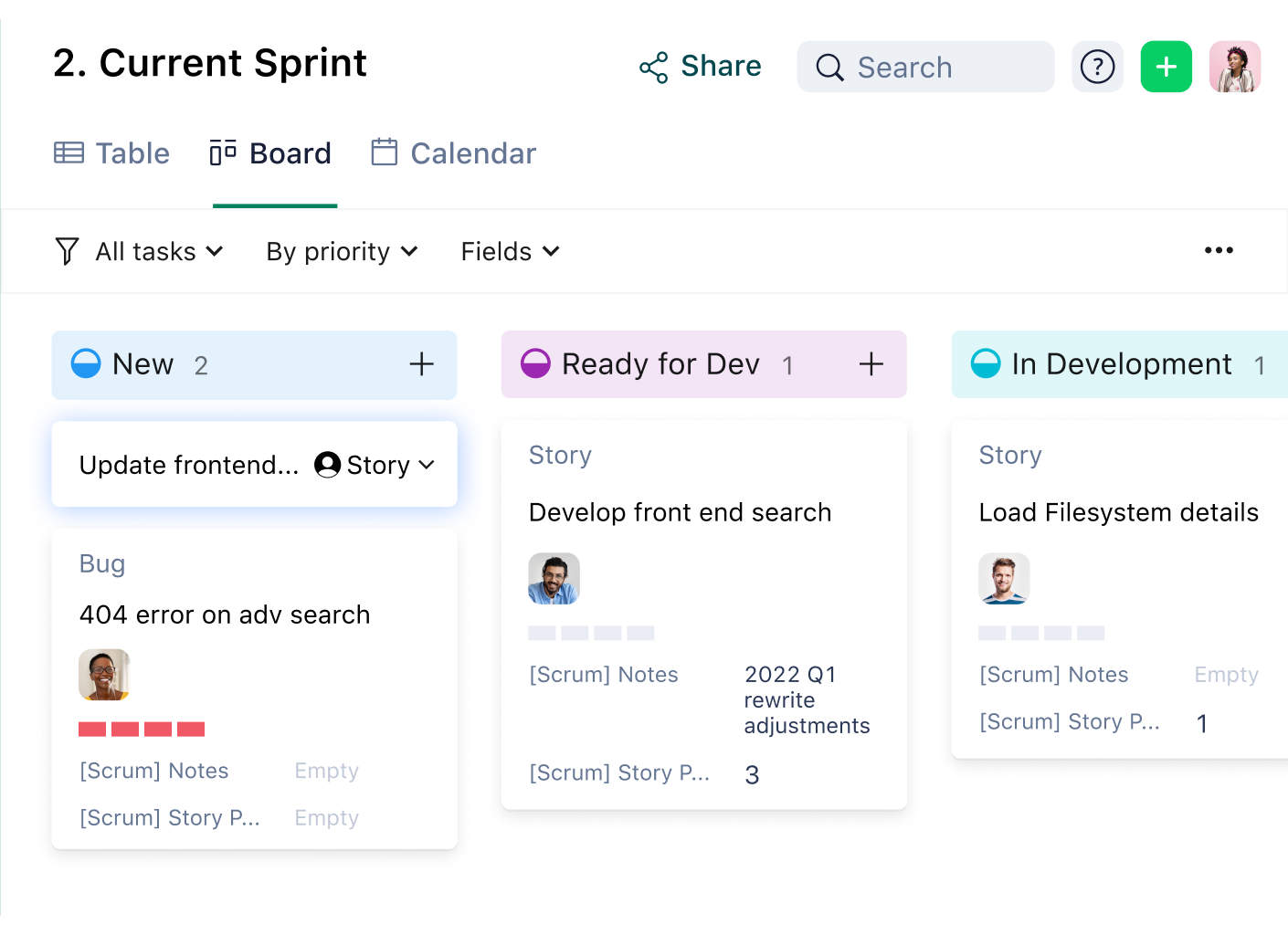What Is Agile Transformation?
Agile transformation is when an organization transitions fully to an Agile approach. This transition is not limited to a product development team — for a company to be truly Agile, every employee across every department must embrace the values and principles outlined in the Agile Manifesto. This means a willingness to be more flexible and reactive, collaborate effectively, and communicate openly.
Managing consulting firm McKinsey & Company notes that a comprehensive Agile transformation will reach the four key facets of the organization: people, processes, technology, and structure. It will also ensure that the company adopts an iterative approach to development, meaning activities are repeated in cycles until the optimal result is achieved.
Agile transformation vs. Agile adoption
Agile transformation is often confused with Agile adoption. The latter refers to the singular act of a team adopting an Agile project management methodology such as Scrum or Kanban. It is a relatively short-term process that can be implemented temporarily for a particular project. As there is little structural change involved, Agile adoption does not require a huge amount of planning.
On the other hand, undergoing an Agile transformation requires far more consideration and is a long-term process. Change is implemented slowly, and it can take years. As it affects the entire company from the leadership team to engineers, plans are more complex, and project managers must have extensive knowledge of Agile principles. As Steve Dennings wrote in Forbes, the journey to Agile transformation “will include radical shifts in attitudes, values, mindsets, ways of thinking, and ways of interacting with the world — in effect, a change in organizational culture.”
Agile transformation vs. digital transformation
While Agile transformation relies on a wide-reaching set of principles to instigate change, digital transformation focuses on implementing emerging technologies, such as AI, cloud services, and the internet of things. Digital transformation aims to replace manual, outdated processes with new ones that are enhanced by digital technology.
Agile transformation can be complementary to digital transformation. Both processes deal with radical change and continuous innovation. They implement new practices to achieve business growth and meet customer needs. By pairing them together to create Agile digital transformation, companies can get the best of both worlds to scale agility.
Things move fast in the digital world, and it can be hard to keep up with the latest technology. Agile methodologies and principles provide structure to an enterprise on the journey to digital transformation. An Agile approach will equip teams with the ability to embrace these changes, successfully transform and react quickly to realize the full potential of their new technologies.
Benefits of Agile transformation
The benefits of Agile business transformation have been celebrated across many industries. Microsoft is just one example of an organization that successfully pivoted to an Agile mindset, discarding the top-down model of project management to empower teams.
We have previously discussed the various benefits and advantages of Agile, including flexibility, predictability, customer satisfaction, high-quality products, fewer risks, and improved communication. Here are a few additional perks that Agile transformation can offer:
Better team collaboration
When organizations transition from a traditional methodology such as Waterfall, they give their teams more freedom to work independently. Team members are encouraged to self-organize and come up with their own solutions and ways of working. Autonomous teams have more avenues for creativity and collaboration, which will likely boost team morale.
Accelerated delivery
Agile teams work in short iterations, known as sprints in the Scrum methodology. These sprints run for an average of two weeks, with deliverables produced at the end of each one. By breaking the project down into smaller units of time, your team can eliminate wider distractions and hone their focus on one particular deliverable. If there is a change in requirements, it can be addressed quickly. Sprint planning is a great way to accelerate your product delivery and consistently hit your targets.


Increased ROI
One of the most desirable benefits of Agile transformation is a higher return on investment (ROI). Agile organizations are more efficient and focus only on projects that deliver ROI. They constantly measure performance and reassess projects, eliminating any that do not offer real value. Agile transformation often incorporates Lean project management principles, which suggest cutting out waste areas to decrease costs. Agile teams also incorporate customer feedback into the development process to ensure that final deliverables suit their needs. This leads to higher retention rates and profitability levels.
Though the potential benefits are significant, there are also many challenges to Agile transformation.
Challenges of Agile transformation
As mentioned, Agile transformation is a serious undertaking that requires a lot of effort. Though there are countless success stories, many teams also struggle with the process of enterprise Agile transformation. Scruminc.com suggests that a whopping 47% of Agile transformations fail.
Here are some of the obstacles that can occur when making the switch to Agile:
Strain on resources
Agile transformation is a lengthy process that can take years. Companies need to invest a lot of time preparing for the switch and training their teams. If a company opts for Agile digital transformation, this will require investment in new technologies. This is not a one-time investment either, as these tools will require consistent maintenance, and they will need to be replaced when they become obsolete.
Unwillingness to change
Resistance to change is a major obstacle. You might find it difficult to encourage some employees to revolutionize their entire way of working, especially if they see no downside to their traditional methods. If this is the case, you will need to make an extra effort to showcase the benefits of Agile transformation and convince your team to get on board.
Lack of clarity
Even if your employees are willing to embrace Agile transformation, they may have trouble navigating the new way of doing things. The transition from a traditional methodology to an Agile one is a major upheaval that will require a whole new set of principles, processes, team roles, and more. People may be unclear on what their new title is or what exactly the Agile mindset means in relation to their daily working practices.
Though it’s almost impossible to eliminate these challenges entirely, a project manager can give their organization the best possible chance of success at Agile transformation by taking the time to adequately prepare, and following best practices.
Steps to Agile transformation
Once you have learned everything there is to know about Agile and are sure it is the right choice for your organization, you can begin the Agile transformation process. Consider the following steps:
1. Outline goals
Why are you transforming to an Agile mindset? What do you hope to achieve by implementing an Agile project management methodology across your company? Make a clear list of your objectives and key results.
2. Build roadmap
Next, you need a project roadmap. Determine key performance markers and set dates for completion. Use a Gantt chart to organize your milestones and adjust them if you need to.
3. Create teams
Decide on your new Agile team structure. Will you take inspiration from the squad teams in the Spotify model, or will you opt for a Scrum approach? Take some time to consider the best option for your organization.
4. Train staff
Ensure your employees are up to speed with regular training sessions. Repeat the principles of the Agile Manifesto and introduce new processes with live demos, video tutorials, and more.
5. Communicate regularly
Make a communication plan to keep all stakeholders in the loop. Check in with your teams to get feedback on how the transition affects them and address any issues quickly.


